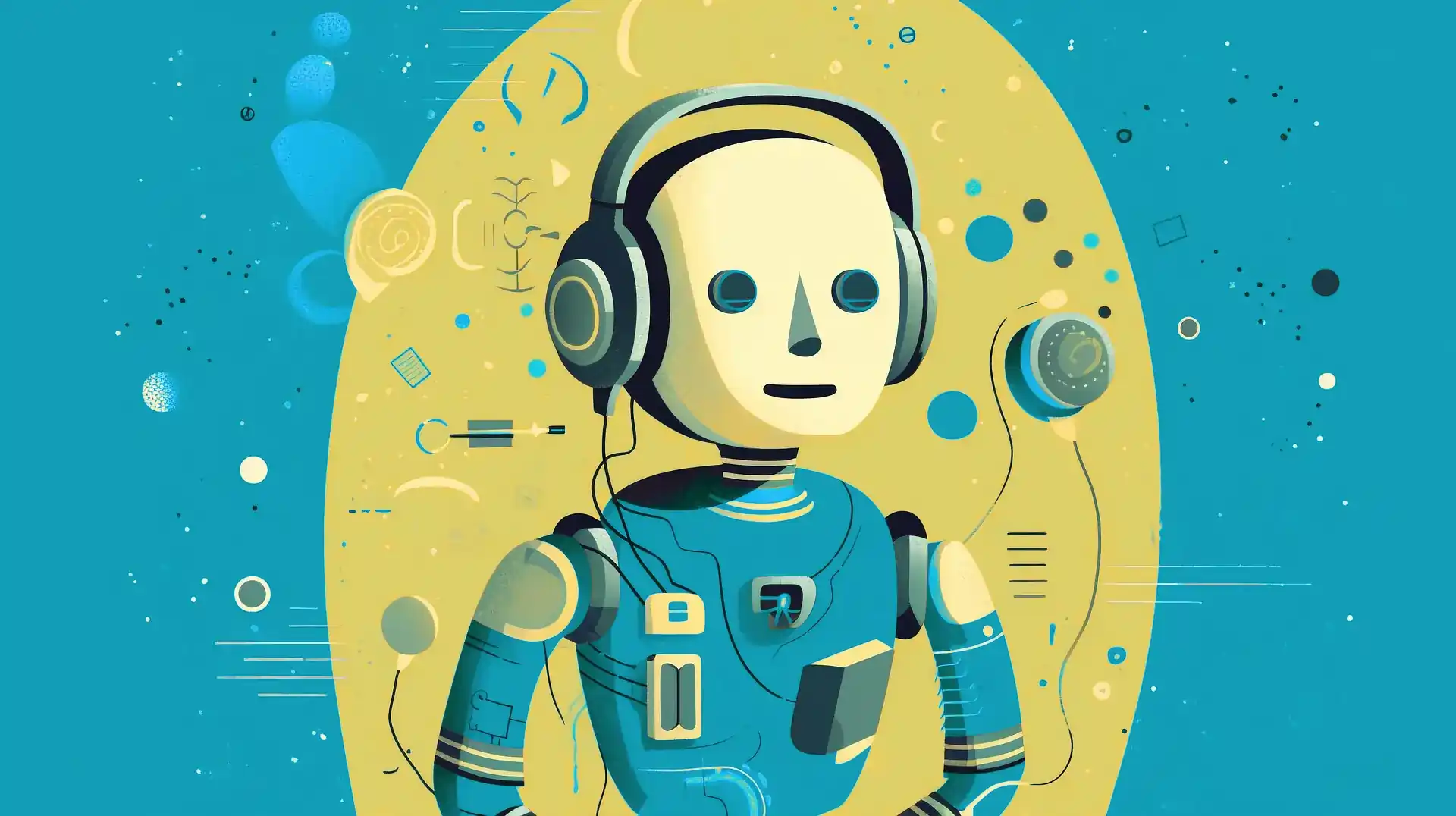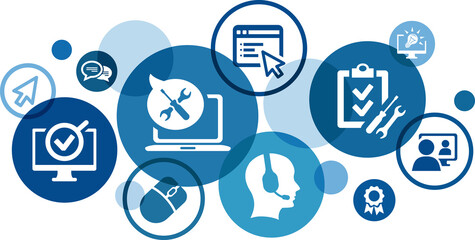How to improve customer experience with AI in 2025
Since the launch of ChatGPT by OpenAI in November 2022, and the subsequent explosion of interest in artificial intelligence, we’ve witnessed rapid and transformative progress in the use of conversational AI within customer service. What began as an experimental tool is now a core component of digital support strategies across industries, driving efficiency, personalization, and 24/7 availability at scale.
The shift is not slowing down. The global AI customer service market is projected to reach $47.82 billion by 2030, reflecting widespread adoption across retail, healthcare, finance, and beyond. Brands are no longer just experimenting with A, they're redesigning entire customer journeys around it.
- Today, 62–80% of customers prefer using chatbots and AI assistants for fast, 24/7 support
- By 2025, AI will handle 95% of all customer inquiries, slashing costs by 30–40% per interaction .
- According to Bloomberg, companies like Microsoft report over $500M in annual savings in call centers thanks to AI.
In this post, we’ll look at how AI is transforming customer experience. From smarter chatbots and personalized interactions to emotion-aware agents and powerful multi-agent systems. We’ll also break down what CX teams need to know to make the most of these tools and keep moving forward.
Why AI is essential for CX in 2025
Nowadays, customer expectations are higher than ever. Customers want instant responses, effortless journeys, and personalized support, regardless of the time, channel, or complexity of their request. AI has become the only scalable way to meet those expectations without burning out support teams or inflating operational costs.
Here’s why AI is no longer a nice-to-have, but a necessity:
1. 24/7 support is the new standard
Customers don’t really care what day or time it is, they want help when they need it. That could be late at night, on a Sunday, or through whatever channel they’re most comfortable with, like WhatsApp or voice.
AI tools like chatbots and virtual assistants make that kind of always-on support possible. They cut out the wait and fill the gaps that human teams just can’t cover all the time. When people get quick, reliable help, it doesn’t just make them happy, it makes them trust you.
2. AI helps you do more, with less
AI doesn’t just replicate human support, it enhances it. A single AI assistant can handle thousands of conversations at once, automatically sort requests, and only escalate the ones that truly need a human touch.
The impact is real. Wait times go down, team resources are used more efficiently, and the customer experience improves without sacrificing quality. Rather than replacing human agents, AI frees them up to focus on solving complex issues, showing empathy, and adding strategic value.
3. Personalization that goes beyond first names
Thanks to machine learning and predictive analytics, AI can tailor interactions to each user’s behavior, preferences, and history. It can:
- Recommend relevant products based on past purchases
- Prioritize VIP customers automatically
- Proactively offer help before a user even asks
This level of personalization not only improves CX, but also boosts conversion rates and retention.
4. Agent experience improves too
AI doesn’t just benefit customers, it also transforms agents’ daily work. By summarizing previous conversations, suggesting the best next steps, and even drafting initial replies, AI enables agents to work faster and with greater confidence.
This reduces repetitive tasks and gives them more time to focus on solving complex issues and providing a more personalized, human touch. As a result, agents feel more satisfied and motivated, which leads to higher-quality support for customers.
5. Customers now take it for granted
Artificial intelligence has become a part of everyday life. Thanks to tools like ChatGPT and Google Gemini, people interact with AI daily and now expect the same speed and intelligence when engaging with brands.
Falling behind in AI adoption risks making your customer service feel outdated and out of touch with what customers expect today.
Core AI trends shaping CX
As artificial intelligence becomes a core component of customer experience strategy, new capabilities are emerging that expand what's possible at every touchpoint. These are some of the key trends shaping this new era:
- Hyper-personalization at scale: AI enables real-time adaptation of content, offers, and messaging based on each user's profile and behavior. What once required manual effort can now be automated and delivered at scale.
- Multimodal AI assistants: Conversational assistants are evolving to understand and integrate multiple formats, such as text, voice, images, even video, within a single interaction. This enhances accessibility and delivers far more natural experiences.
- Agentic AI systems: These are systems capable of acting autonomously. They don’t just respond, they make decisions, carry out complex tasks, and manage processes end to end with minimal oversight.
- Emotion-aware & empathetic AI: New models can detect emotions, tonal shifts, and signs of frustration. This allows for real-time adaptation and more human, empathetic interactions.
- Smarter self-service & search: AI-powered interfaces understand natural language queries and provide more accurate, contextualized responses. The result: less friction and greater user autonomy.
- Human + AI collaboration: Rather than replacing teams, AI works as a co-pilot, offering speed, context, and smart suggestions, while people retain control, empathy, and strategic decision-making.
Adapting to this new standard is no longer a competitive advantage — it’s the baseline for staying relevant.
weWow´s 7 pillars for applying AI in customer experience
To help brands unlock the full potential of AI in customer experience, weWow has identified seven key pillars that guide effective implementation and drive real impact.
1. Leverage conversational AI as your first line of defense
Don’t wait for every user to reach a human agent. Deploy smart assistants that can immediately handle basic inquiries. This will cut wait times and free up your team to focus on cases that truly need personalized attention.
2. Use predictive personalization at every interaction
Avoid generic messaging. Implement AI that analyzes real-time data to anticipate each customer’s needs and dynamically tailor offers and content, boosting relevance and engagement.
3. Incorporate voice and emotion-aware AI
Speed isn’t enough, you need to connect on a human level. Technology that detects tone and emotions lets you adapt responses for more empathetic interactions, especially in sensitive or high-frustration moments.
4. Implement proactive, agentic AI systems
Don’t wait for customers to ask for help. Design processes where AI can spot issues before they arise or take initiative to resolve tasks, enhancing both experience and operational efficiency.
5. Optimize knowledge management and search with AI
Make sure both customers and agents have quick, easy access to the info they need. AI can make searches more intuitive and keep knowledge bases updated and context-aware automatically.
6. Measure everything with data and close the loop with continuous feedback
Don’t settle for surface-level metrics. Use AI to deeply analyze every interaction, identify patterns, and continuously adjust your strategy to steadily improve the experience.
7. Prioritize ethical and transparent AI design
Trust matters. Be clear about when and how you use AI, avoid bias in your models, and ensure customers feel the technology is working for them, not against them.
By focusing on these seven pillars, you can build a CX strategy that is not only innovative but also effective, ethical, and truly human-centered.
How weWow transformed customer experience with AI
The best way to truly understand the impact of any solution is by looking at real results. We can proudly say that weWow has supported growing brands in scaling their customer service, without losing quality or the personal touch, by combining smart AI with a close, collaborative partnership.
in3
Facing rapid growth, in3 partnered with weWow to build a scalable, integrated customer support team that drives innovation and prepares them for international expansion.
Otrium
Otrium rapidly expanded their support team while maintaining top satisfaction scores, thanks to 24/7 global coverage and robust fraud prevention implemented alongside weWow.
Dixa
Dixa automated 50% of its customer chats and doubled agent efficiency by partnering with weWow to implement advanced CX technologies and scalable support solutions.
Emerging challenges & risks
AI brings huge benefits but also new challenges that brands must address to ensure a trustworthy, high-quality customer experience.
Top risks to watch in 2025:
- Hallucinations & inaccurate responses: Generative AI can sound confident even when wrong, causing misinformation, confusion, and loss of trust.
Tip: Use verified data sources, human review on sensitive queries, and techniques like retrieval-augmented generation (RAG).
- AI fatigue & over-automation: Overusing bots can create robotic, impersonal experiences and dead ends for complex issues.
Advice: Always offer a “talk to a human” option and use AI to assist, not replace, human agents.
- Bias in AI decision-making: Biased training data can lead to unfair treatment and exclusion of certain customer groups.
Solution: Audit data, run fairness tests, and ensure diverse representation in training.
- Privacy & compliance risks: Handling large amounts of personal data requires strict adherence to privacy laws and transparency.
Best practice: Obtain clear consent, minimize data collection, and anonymize when possible.
- Lack of Internal Readiness: Without proper training, governance, and alignment, AI tools can fail and fragment the experience.
Action: Invest in cross-team training, define roles, and align AI projects with CX goals.
Understanding and anticipating these challenges is essential to fully harness AI’s potential in customer experience without sacrificing trust or quality.
Conclusion
In 2025, delivering great customer experience means being fast, personalized, and available 24/7, and AI is what makes that possible. The most forward-thinking brands aren’t just adding chatbots; they’re reimagining how they connect with customers at every stage of the journey.
The key is using AI in a way that feels intuitive and human. When done right, it doesn’t just boost efficiency, it makes the entire experience feel smoother, more helpful, and more personal.






